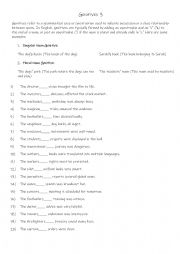
|
A1+-A2 Genitives (3)
This worksheet is suitable for A1+-A2 level students. Genitives refer to a grammatical case or construction used to indicate possession or a close relationship between nouns. Students complete the 20 sentences after reading the rules. Answers on page 2
Level: elementary
Age: 7-100
Type:
Downloads: 117
|
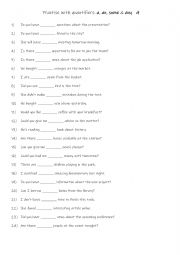
|
A1-A2 Practise with quantifiers a , an , some & any 4
Mastering these basics is essential for both everyday communication and more advanced language use, as these quantifiers are frequently used in real-life scenarios like offering, requesting, or describing items. First, students need to familiarise themselves with 4 quantifiers and check their meaning and use. Then they read the sentences to see whi...
Level: elementary
Age: 8-100
Type:
Downloads: 117
|
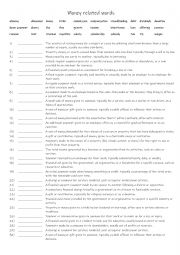
|
A2+-B1+ 30 money related words
First, students need to familiarise themselves with the 30 money related words and their meanings. Then they read the definitions to see which one is being described and write that word in the space provided Answers on page 2.
Level: intermediate
Age: 12-100
Type:
Downloads: 117
|
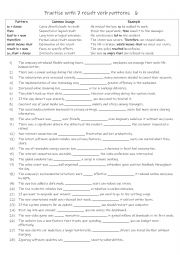
|
B1-B2 Practise with 7 result verb patterns 6
First, students need to familiarise themselves with the 7 result verb patterns and use. Then they read the sentences to work out which one is needed to complete the gap-fill. Each verb pattern is used 4 times! Answers on page 2.
Level: intermediate
Age: 10-100
Type:
Downloads: 117
|
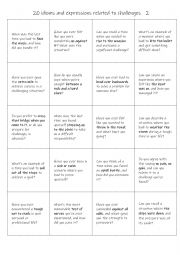
|
B1+-C1 20 idioms and expressions related to challenges 2
This is a speaking reinforcement activity to supplement the other worksheet I uploaded on 22/1/2025. Students working in pairs or small groups can either ask each other the questions or answer the question themselves.
Level: intermediate
Age: 11-100
Type:
Downloads: 117
|
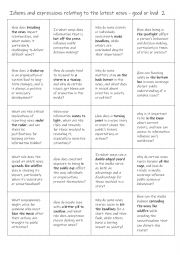
|
B1+-C1 20 Idioms and expressions relating to the latest news - good or bad 2
This is a speaking reinforcement activity to supplement the other worksheet I uploaded on 17/1/2025. Students working in pairs or small groups can either ask each other the questions or answer the question themselves.
Level: intermediate
Age: 12-100
Type:
Downloads: 117
|
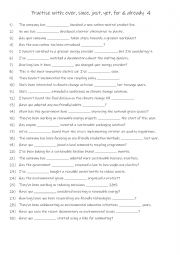
|
A2+-B1 Practise with ever, since, just, yet, for & already 4
First, students need to familiarise themselves with the 6 adverbs and their use. Then they read the sentences to work out which one is needed to complete the gap-fill. Each adverb is used 5 times! Answers on page 2.
Level: elementary
Age: 9-100
Type:
Downloads: 117
|
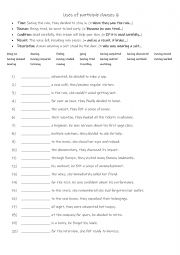
|
Uses of participle clauses 6
Students should learn the five uses of participle clauses because they help create more concise, fluid, and sophisticated sentences. These clauses allow for the expression of time, reason, condition, result, and description in a shorter, more efficient way, making writing and speaking more dynamic and less repetitive. For example, participle clause...
Level: elementary
Age: 10-100
Type:
Downloads: 117
|

|
B2-C1 25 adverbs for emphasising
Learning adverbs for emphasis is essential because it adds precision and depth to communication, especially in English where subtle distinctions matter. Adverbs like exceptionally, profoundly, and significantly enable students to intensify adjectives or verbs, adding layers to descriptions and making them more impactful. This allows for clearer and...
Level: intermediate
Age: 10-100
Type:
Downloads: 116
|
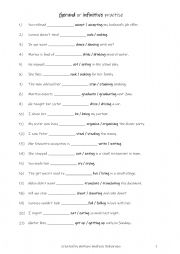
|
Gerund or infinitive
21 exercises for students to practise with.Different meanings can be conveyed by choosing either a gerund or an infinitive after certain verbs (e.g., "stop to smoke" vs. "stop smoking"). Understanding these nuances enhances your ability to convey precise meanings.Overall, practicing gerunds and infinitives is a fundamental aspect of mastering Engli...
Level: elementary
Age: 10-100
Type: worksheet
Downloads: 116
|












